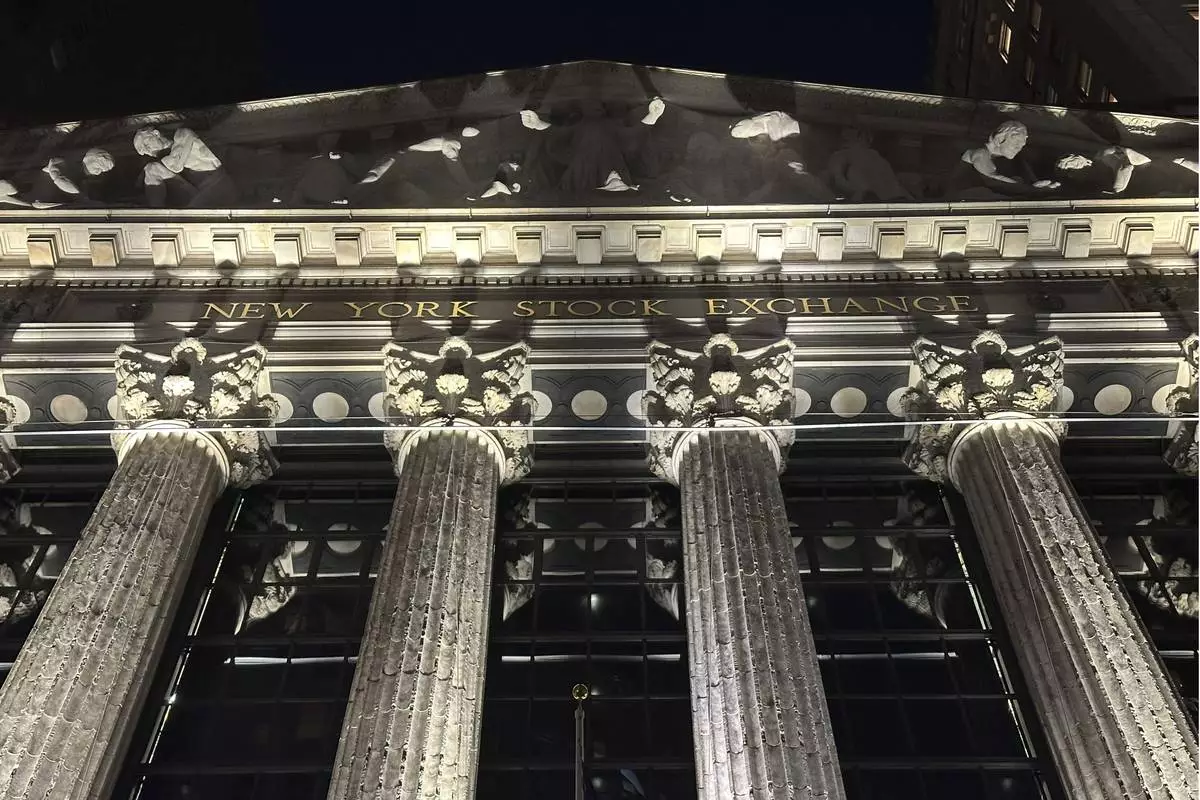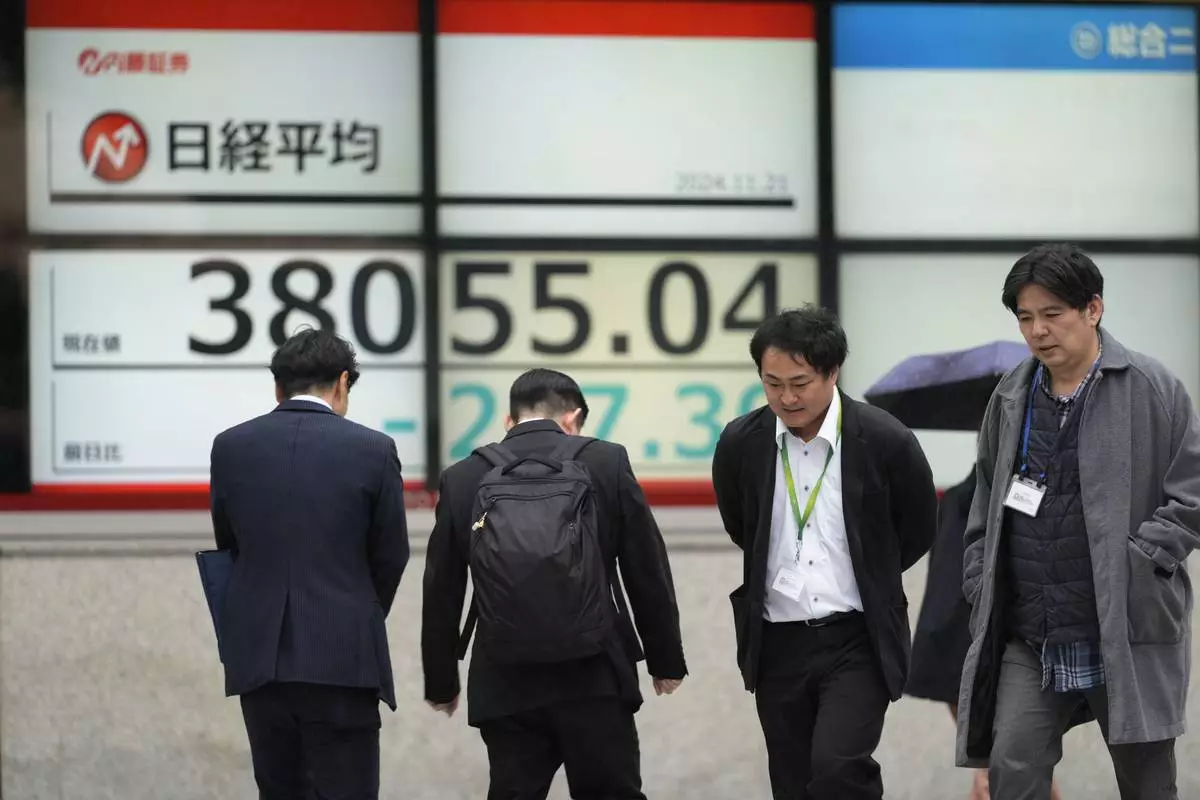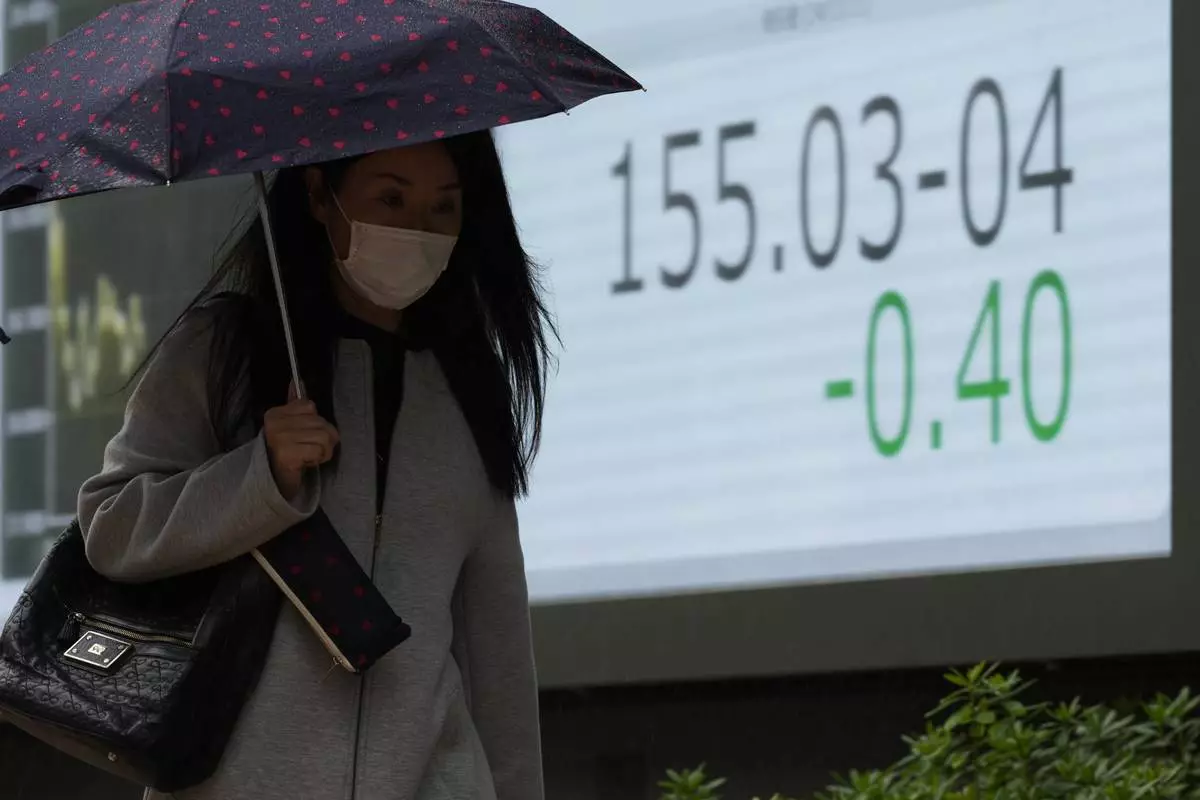The average rate on a 30-year mortgage in the U.S. edged closer to 7% this week, climbing to its highest level since July.
The rate rose to 6.84% from 6.78% last week, mortgage buyer Freddie Mac said Thursday. That’s still down from a year ago, when the rate averaged 7.29%.
Borrowing costs on 15-year fixed-rate mortgages, popular with homeowners seeking to refinance their home loan to a lower rate, also ticked up this week. The average rate rose to 6.02% from 5.99% last week. A year ago, it averaged 6.67%, Freddie Mac said.
When mortgage rates increase they can add hundreds of dollars a month in costs for borrowers, reducing homebuyers’ purchasing power at a time when home prices remain near all-time highs, even though U.S. home sales are on track for their worst year since 1995.
The average rate on a 30-year mortgage fell to a two-year low of 6.08% in late September but it’s been mostly rising since then, echoing moves in the 10-year Treasury yield, which lenders use as a guide to pricing home loans.
The yield, which has mostly hovered around 4.4% since last week and was below 3.70% in September, has been rising in recent weeks following mixed reports on inflation and the economy. It also surged after the presidential election, reflecting expectations among investors that President-elect Donald Trump’s proposed economic policies may widen the federal deficit and crank up inflation.
Mortgage rates slid to just above 6% in September following the Federal Reserve’s decision to cut its main interest rate for the first time in more than four years. While the central bank doesn’t set mortgage rates, its actions and the trajectory of inflation influence the moves in the 10-year Treasury yield. The central bank’s policy pivot is expected to eventually clear a path for mortgage rates to generally go lower. But that could change if the next administration’s policies send inflation into overdrive again.
September's pullback in mortgage rates helped drive a pickup in sales of previously occupied U.S. homes last month. However, the recent climb in rates has put a damper on the housing market in the near term, said Hannah Jones, senior economic research analyst at Realtor.com.
“Mortgage rates reached the high-6% range in late October, and have remained elevated since, much to the disappointment of buyers hoping to find some relief in the late-fall housing market,” she said.
Forecasting the trajectory of mortgage rates is difficult, given that rates are influenced by many factors, from government spending and the economy, to geopolitical tensions and stock and bond market gyrations.
Economists predict that mortgage rates will remain volatile this year, but generally forecast them to hover around 6% in 2025.

FILE - A for sale sign hangs outside a home in the Brooklyn borough of New York on Nov. 13, 2024. (AP Photo/Peter Morgan, File)
NEW YORK (AP) — U.S. stocks are rising Thursday after more companies said they’re making fatter profits than expected. Market superstar Nvidia also topped forecasts, but Wall Street’s ambivalence about whether the heavyweight's report was impressive enough is keeping indexes in check.
The S&P 500 was 0.6% higher, as of 1:02 p.m. Eastern time, following many flips between modest gains and losses through the morning. The Dow Jones Industrial Average rose 543 points, or 1.3%, and the Nasdaq composite rose 0.1%. The moves were part of a busy day for financial markets, as bitcoin briefly broke above $98,000 and crude oil prices continued to rise.
Nvidia was a big reason for the stock market's meandering after yet again beating analysts’ estimates for profit and revenue. It also gave a forecast for revenue in the current quarter that topped most analysts’ expectations thanks to voracious demand for its chips used in artificial-intelligence technology.
Its stock initially sank in afterhours trading late on Wednesday following the release of the results. Some investors said that might have been because the market was looking for Nvidia's revenue forecast to surpass expectations by even more. But its stock then recovered in premarket trading Thursday, and Wedbush analyst Dan Ives said it was another “flawless” profit report provided by Nvidia and CEO Jensen Huang, whom Ives calls “the Godfather of AI.”
How Nvidia’s stock performs has tremendous impact because it’s quickly grown into Wall Street’s most valuable company at nearly $3.6 trillion. That means a 1% move for it packs more weight on the S&P 500 than the same move for any other stock.
Nvidia's stock on Thursday quickly went from an early jump of 4.8% to a loss of 3.6% before settling at a drop of 1.3%. It was one of the heaviest weights on the S&P 500.
The frenzy around AI is sweeping up other stocks, and Snowflake jumped 34.2% after reporting stronger results for the latest quarter than analysts expected. The company, whose platform helps customers get a better view of all their silos of data and use AI, also reported stronger revenue growth than expected.
BJ’S Wholesale Club rose 9.6% after likewise delivering a bigger profit than expected. That may help calm worries about how resilient U.S. shoppers can remain, given high prices across the economy and still-high interest rates. A day earlier, Target tumbled after reporting sluggish sales in the latest quarter and giving a dour forecast for the holiday shopping season. It followed Walmart, which gave a much more encouraging outlook.
Roughly 90% of the stocks in the S&P 500 were also rising, and the gains were even bigger among smaller companies. The Russell 2000 index of smaller stocks climbed a market-leading 1.8%.
But Google’s parent company, Alphabet, was helping to drag on indexes. It fell 5.7% after U.S. regulators asked a judge to break up the tech giant by forcing it to sell its industry-leading Chrome web browser.
In a 23-page document filed late Wednesday, the U.S. Department of Justice called for sweeping punishments that would include restrictions preventing Android from favoring its own search engine. Regulators stopped short of demanding Google sell Android but left the door open to it if the company’s oversight committee continues to see evidence of misconduct.
Drops for other Big Tech stocks also weighed on the market, including slides of 1.7% for Amazon and 0.7% for Meta Platforms.
In stock markets abroad, shares of India’s Adani Enterprises plunged 22.6% Thursday after the U.S. charged founder Gautam Adani, 62, in a federal indictment with securities fraud and conspiracy to commit securities and wire fraud. The businessman and one of the world’s richest people is accused of duping investors by concealing that his company’s huge solar energy project on the subcontinent was being facilitated by an alleged bribery scheme.
Indexes elsewhere in Asia and Europe were mixed.
In the crypto market, bitcoin is trading around $97,800 after eclipsing $98,000 for the first time. It’s more than doubled so far this year, and its climb has accelerated since Election Day. President-elect Donald Trump has pledged to make the country “the crypto capital of the planet” and create a “strategic reserve” of bitcoin.
Bitcoin and related investments, of course, have a notorious history of big price swings in both directions. MicroStrategy, a company that's been raising cash expressly to buy bitcoin, saw an early gain of 14.6% for its stock on Thursday quickly disappear. It was most recently down 1.6%.
In the oil market, a barrel of benchmark U.S. crude rose 1.2% to bring its gain for the week to 3.8%. Brent crude, the international standard, climbed 1.2%. Oil has been rising amid escalations in the Russia-Ukraine war.
In the bond market, Treasury yields held relatively steady following some mixed reports on the U.S. economy. The yield on the 10-year Treasury remained at 4.41% from late Wednesday.
One report said fewer U.S. workers applied for unemployment benefits last week in the latest signal that the job market remains solid. Another report, though, said manufacturing in the mid-Atlantic region unexpectedly shrank. Sales of previously occupied homes, meanwhile, strengthened last month by more than expected.
AP Business Writers Matt Ott and Yuri Kageyama contributed.

FILE - People walk under a sidewalk shed near the New York Stock Exchange on Oct. 30, 2024. (AP Photo/Peter Morgan, File)

The facade of the New York Stock Exchange is illuminated on Tuesday, Nov. 19, 2024. (AP Photo/Peter Morgan)

People walk by monitors showing Japan's Nikkei 225 index and Japan's foreign exchange rate against the U.S. dollar at a securities firm in Tokyo, Thursday, Nov. 21, 2024. (AP Photo/Hiro Komae)

Travelers walk by monitors showing Japan's Nikkei 225 index at a securities firm in Tokyo, Thursday, Nov. 21, 2024. (AP Photo/Hiro Komae)

A woman covering herself from the rain walks by monitors showing Japan's Nikkei 225 index at a securities firm in Tokyo, Thursday, Nov. 21, 2024. (AP Photo/Hiro Komae)

People walk by monitors showing Japan's Nikkei 225 index at a securities firm in Tokyo, Thursday, Nov. 21, 2024. (AP Photo/Hiro Komae)

A woman walks by a monitor showing Japan's foreign exchange rate against the U.S. dollar at a securities firm in Tokyo, Thursday, Nov. 21, 2024. (AP Photo/Hiro Komae)

















